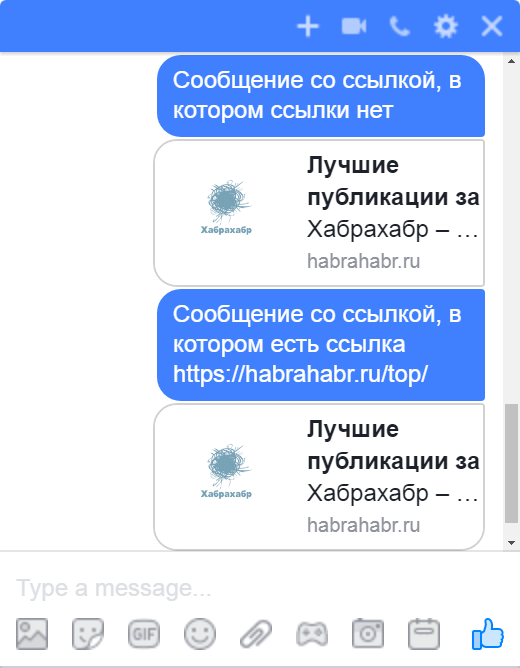Facebook Messenger bug or feature - Poll

If you write a message to Facebook Messenger and add a link to it, and then delete it, the link will still be sent.
When is it bad?
In one of the business correspondence, I needed to copy and send a piece of text. Apparently, I did not hit the Ctrl + C buttons, and instead of the text, I inserted a link that related to my personal affairs and was on the clipboard. Noticing this, I deleted the link and pasted the desired text, then sent the message. The link went ... I was surprised and very puzzled, I had to explain that the link had nothing to do with it. But it could be some kind of financial report or something else ...
What does Facebook think?
I wrote about the problem on Facebook . But judging by their answer, they consider it a functionality that allows you to remove "unnecessary" links. They also refer to the fact that the link will be visible in the preview.
Facebook response
If you’re not in the least, you’ll see it. You can see before sending. This is a report on the issue of our bug bounty program.
What ux thinks
Jakob Nielsen , a usability guru, formulated 10 usability heuristics in the 1990s for evaluating user interfaces. These rules have passed the test of time, and now UX designers have a simple way to assess the usability of interfaces.
')
We describe some of the 10 heuristics for which the messenger has problems:
- Awareness of the state of the system. Users should always know what is currently happening with the system. This requires full and fast feedback. However, in the situation described above, even if there is a preview of the link, it is not at all clear whether it will be sent if it is not in the text of the message.
- Freedom of action and control. Users often select some functions of the system by mistake, and they need an “urgent exit” button to restore the previous state of the system without engaging in a long dialogue. But unfortunately there is no option to delete the message after sending it to Facebook Messenger.
- Preventing mistakes. Better good error messages can only be thoughtful design, which, first of all, prevent the problem. Either eliminate the conditions that lead to errors, or identify errors and provide the user with the option to confirm before he performs the action. Here again, no one asked if I really wanted to send a link that I deleted from the message. She just took and sent.
And although the described heuristics should be treated more like a “set of instructions, and not hard laws”, it is obvious that Facebook would be better to work on UX design. In my case, such a crude interface reduces the performance of my productivity, efficiency, and of course satisfaction.
What do you think?
Source: https://habr.com/ru/post/338576/
All Articles